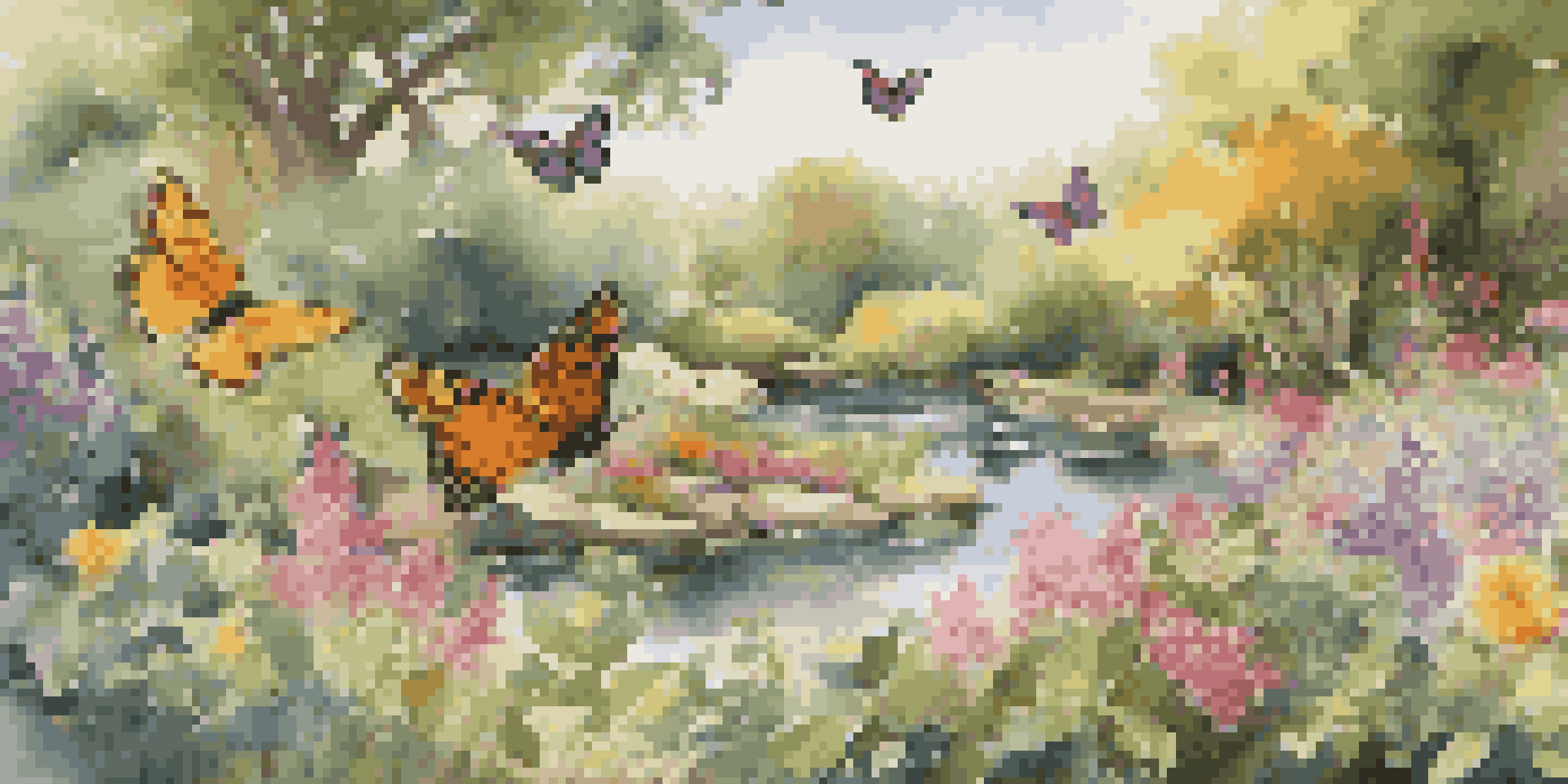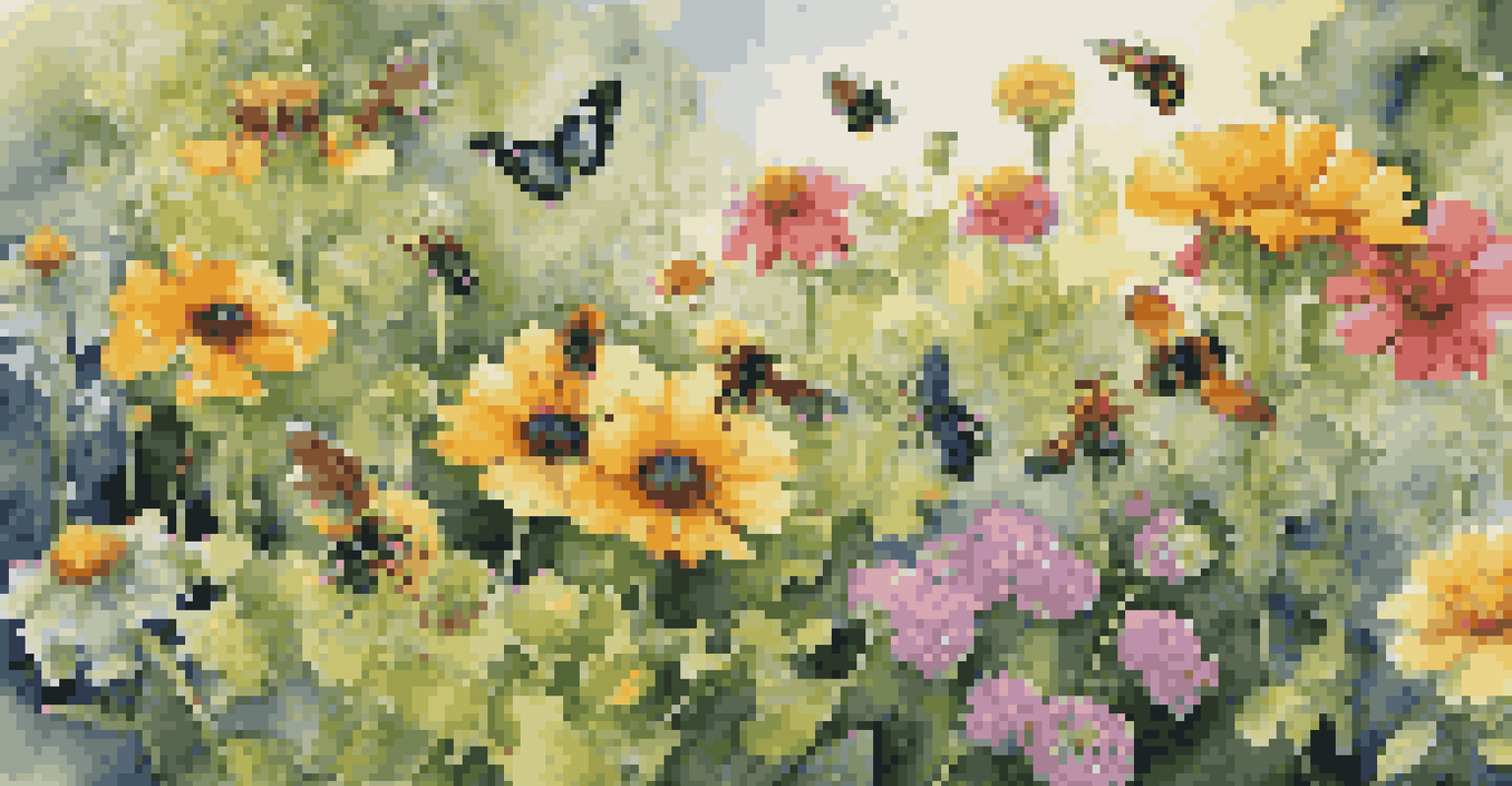The Importance of Diversity in Wildlife-Friendly Gardening

Understanding Wildlife-Friendly Gardening
Wildlife-friendly gardening emphasizes creating spaces that support local biodiversity. This means incorporating various plants, structures, and habitats that attract different species. By doing so, gardeners can contribute to ecological health and sustainability right in their backyards.
The greatest threat to our planet is the belief that someone else will save it.
Think of your garden as a mini-ecosystem. Just like a city needs diversity in its population for vibrancy, a garden thrives with a mix of flora and fauna. This diversity helps maintain balance, allowing for natural pest control and pollination, which are essential for plant health.
Moreover, wildlife-friendly gardens foster a connection between people and nature. They offer a chance to observe the beauty of local wildlife, from butterflies fluttering around to birds chirping in the trees. This connection can inspire a deeper appreciation for the environment.
The Role of Plant Diversity
Plant diversity is crucial in wildlife-friendly gardening because different species provide various resources for animals. For instance, flowering plants attract pollinators like bees and butterflies, while native shrubs offer shelter and food for birds. A garden with a wide range of plants can cater to many different species.

Additionally, native plants are often more resilient to local pests and diseases. They have adapted to the local climate and soil, making them easier to care for. This means less reliance on chemical pesticides, which can harm both wildlife and the environment.
Support Local Biodiversity
Wildlife-friendly gardening creates spaces that attract various species, promoting ecological health and sustainability.
When choosing plants for your garden, consider a mix of perennials, annuals, and shrubs. This variety not only looks beautiful but also ensures that there’s something blooming throughout the seasons, providing a constant food source for wildlife.
Creating Habitats for Wildlife
A key component of wildlife-friendly gardening is creating habitats that support different species. This can include adding birdhouses, bee hotels, or even a small pond. These structures provide safe spaces for wildlife to nest, feed, and thrive.
Nature does not hurry, yet everything is accomplished.
For example, a simple brush pile can serve as a great shelter for small mammals and insects. Similarly, leaving some areas of your garden a bit wild can create natural habitats that attract various creatures. It’s all about encouraging wildlife to feel welcome.
Even small changes can have significant impacts. Planting a few native grasses or wildflowers can attract beneficial insects, while a compost heap can provide a habitat for earthworms and other decomposers. Every little effort counts toward a more biodiverse garden.
Benefits of Biodiversity for Ecosystems
Biodiversity in gardens goes beyond aesthetics; it plays a vital role in ecosystem health. Diverse plant species can improve soil quality, reduce erosion, and increase water retention. This leads to healthier plants and a more robust garden overall.
Moreover, a garden rich in diversity can help combat climate change. Plants absorb carbon dioxide and provide oxygen, contributing to cleaner air. By supporting a variety of life forms, gardeners can aid in creating a more balanced environment.
Plant Variety is Key
Diverse plant species provide essential resources for animals and enhance garden resilience against pests and diseases.
In essence, when we nurture biodiversity in our gardens, we’re not just benefiting ourselves; we’re also contributing to the health of the planet. This interconnectedness emphasizes the importance of every living organism, no matter how small.
Encouraging Pollinators in Your Garden
Pollinators, such as bees, butterflies, and hummingbirds, are essential for the reproduction of many plants. By planting a variety of nectar-rich flowers, gardeners can attract these crucial creatures. This not only supports the pollinator population but also helps ensure a fruitful garden.
Creating a pollinator-friendly garden involves choosing plants that bloom at different times throughout the year. This ensures that there’s always food available for pollinators. For instance, early spring flowers like crocuses can provide much-needed sustenance after a long winter.
Additionally, avoiding pesticides is vital for protecting these important species. Even organic pesticides can harm beneficial insects if not used carefully. By creating a safe, inviting environment, gardeners can play a key role in supporting pollinator health.
Community Impact of Diverse Gardens
Diverse gardens don’t just benefit individual homeowners; they can positively impact entire communities. When neighborhood gardens incorporate wildlife-friendly practices, they create green spaces that enhance local biodiversity. This can lead to healthier ecosystems in urban areas.
Community gardens, in particular, can serve as educational hubs. They provide opportunities for people to learn about native species, sustainable gardening practices, and the importance of biodiversity. These shared spaces help foster a sense of community and connection to nature.
Community Benefits of Green Spaces
Diverse gardens not only beautify neighborhoods but also foster community connection and improve local ecosystems.
Moreover, diverse gardens can also attract more wildlife, which can be a joy for residents. Imagine walking through a neighborhood filled with colorful flowers and the sounds of birds chirping. This not only enhances the aesthetic appeal but also improves the overall quality of life for everyone.
Taking Action: Your Steps Towards Diversity
Taking action towards creating a diverse, wildlife-friendly garden starts with a simple commitment to change. Begin by assessing your current garden layout and identifying areas where you can introduce new plant species or structures. Even small changes can lead to significant improvements.
Consider visiting local nurseries to find native plants that are well-suited to your area. Many local organizations also offer resources or workshops on wildlife gardening. Engaging with these communities can provide valuable support and knowledge.

Lastly, don’t forget to share your gardening journey with others. Encourage friends and family to embrace wildlife-friendly practices in their gardens, creating a ripple effect of positive change. Together, we can all contribute to a healthier planet, one garden at a time.